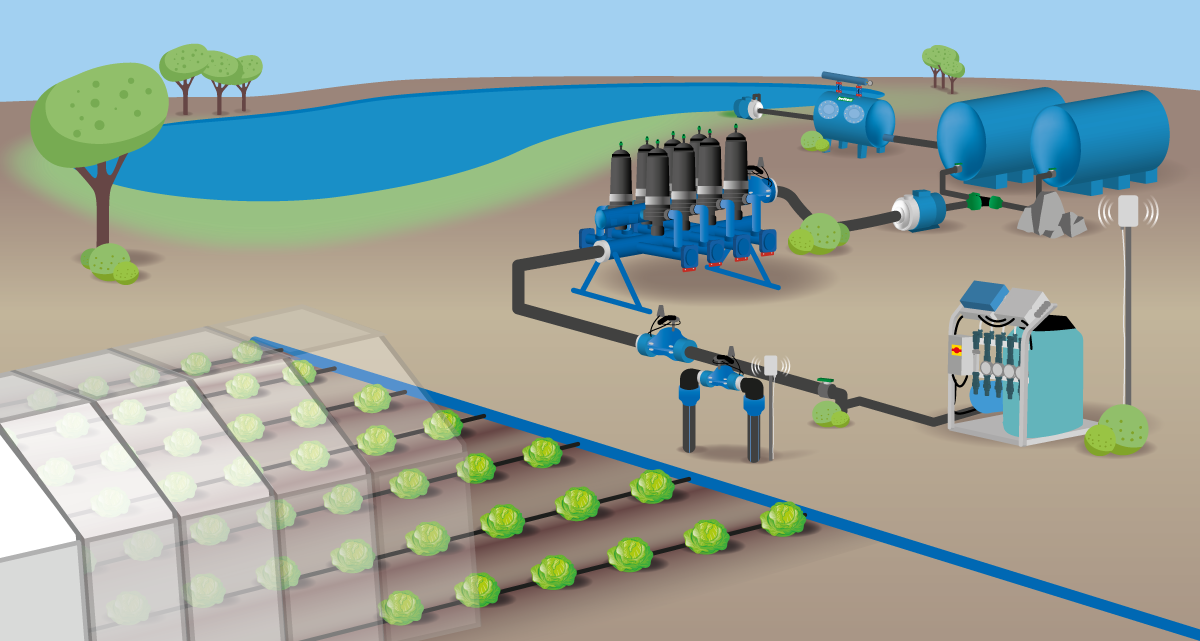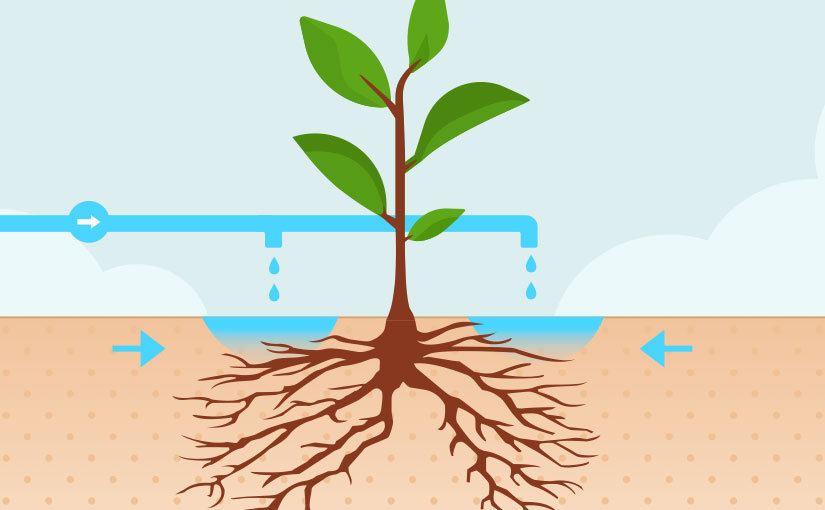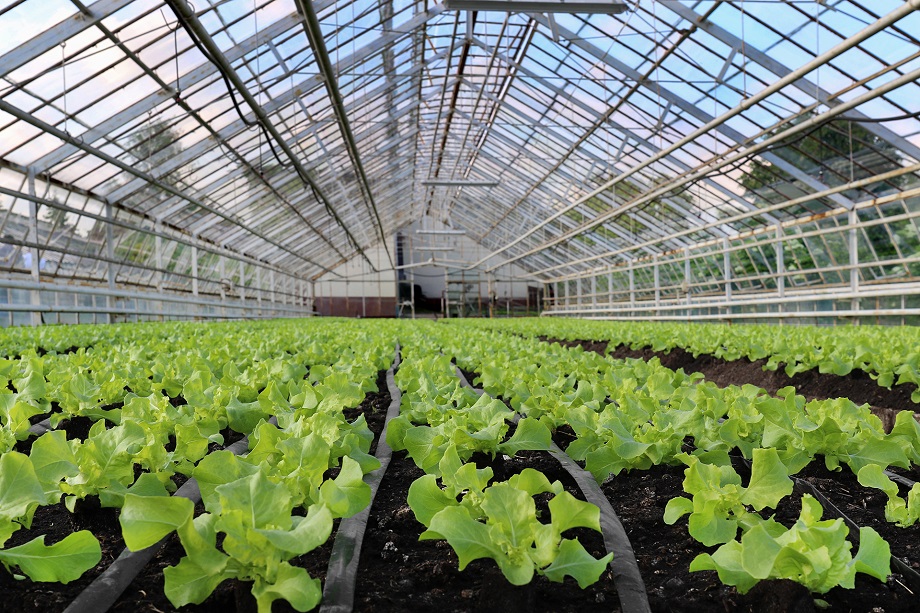Although fertilizers are heavily relied upon in agriculture, their traditional methods of application can be wasteful and their associated run-off often has negative consequences for the local ecosystem. One of the many practices of precision farming, fertigation is a highly adaptable and scalable practice that is widely used as it simplifies the application of fertilizer and irrigation to plants by combining them into one waste-averse system.

What is fertigation?
Fertigation is the application of fertilizers or nutrients into a farming system via the irrigation network, wherein the nutritious inputs are dissolved into water and then absorbed directly by plants when they uptake water. The term combines the terms ‘fertilizer’ and ‘irrigation’ and has existed as a concept for hundreds of years, where farmers in ancient Rome would actually use sewage to water their crops, although it has evolved significantly since this time.
It can be used in conjunction with several different irrigation methods including sprinkler, drip, and soaker irrigation systems, although drip is the most compatible and beneficial irrigation type. Compared to band or broadcast methods of applying fertilizer, it is considered to be the most precise and controlled method of application and typically uses an overall lower volume of fertilizer compared to other techniques. It is also a common practice in hydroponic or soil-less growing systems, as it is by far the easiest technique for administering exact doses of the proper nutrition needed by plants in these systems.
How fertigation systems operate
The main principle of fertigation is to dissolve fertilizers that are water-soluble into the water used for irrigation so that their application is combined. Since wet roots are necessary for effective fertilizer absorption, it greatly increases the efficiency of fertilizer applications by making sure they are supplied to roots in already wetted soil.
The way that fertilizers are stored may vary from system to system, but they are often kept in a liquid form that is easier to combine with water than particles that must be dissolved. The specifics of each fertigation network are dependent on the scale of the farming operation and type of irrigation system, and more advanced operations may be on automated schedules while simpler, smaller-scale farms will do it manually. Typically, a liquid form of fertilizer is stored in a large tank, and then a dripper or injector will imbue the irrigation water with precise volumes of the fertilizer.

Creating successful fertigation systems
Efficient and successful fertigation systems depend on fertilizer choice and the design of the original irrigation network. Drip irrigation systems are the most common and most beneficial type to transform into fertigation systems, as they deliver water and nutrients directly to the root zone of the plant for quick absorption and utilization.
The main considerations in creating a successful system are the type of fertilizer being used, and how soluble, acidic, and compatible they are with the target crops. The compound being used should be based upon the nutrient needs of the plants being grown, and variable rate fertilizer (VRF) systems can pinpoint specific nutrient needs in the soil.
The majority of irrigation networks are now built from plastic or similar materials, which is important as certain fertilizers can be very strong and corrosive to metal piping. For optimal fertigation planning geospatial mapping software should be used to create a multi-layered map that reflects the variations amongst different factors such as soil electrical conductivity, pH, nutrient density, and drainage patterns so that the appropriate inputs can be dissolved into your irrigation system in the correct amounts.
Fertigation compatibility with different irrigation systems
The best fertigation systems are those incorporated with drip irrigation lines, so that water and nutrients can be delivered directly to the root zone of crops – although it can technically be done through any irrigation system.
Sprinkler systems have several significant disadvantages, as much of the fertilized water lands on the leaves and foliage of plants, which wastes valuable resources and has the potential to burn fragile leaves or contribute to the spread of fungal disease through stagnant moisture. Wind may also blow sprayed clouds of fertigated water into neighbouring fields or water sources, which is difficult to account for and may pollute water sources with potentially dangerous outcomes.
Supplying water and nutrients through subsurface drip irrigation is the best technique as there is minimal wastage and it can be absorbed quickly by the plant roots after release. Additionally, drip irrigation also allows for more controlled and precise amounts of fertilizers to be released at specific points in the soil to cater to each plant’s needs compared to sprinklers.
Drip irrigation also requires less pressure to operate than sprinkler systems, which is also true for soaker hose irrigation designs, however these are less ideal than subsurface drip irrigation as they still water on a surface level and don’t have the same precision as water is released from the entire surface area of the hose.

A valuable practice of precision agriculture
Overall, it has proved itself to be a key part of modern agricultural systems and it has, and will continue to, play an important role in spreading the implementation of precision agriculture. Fertigation overcomes the limits of traditional fertilizer applications by creating a higher level of control over the exact volumes and rates at which fertilizers are administered to crops, and it is done on a precise schedule with high levels of nutrient uptake success and minimal wastage.



